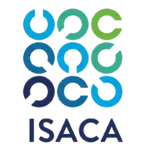Nowadays, accurate estimation of time, effort, and cost in project management is critical to achieving the desired success, because traditional and conventional estimation and planning methods often rely on a single-point estimation, which may result in incomplete plans and work systems that lead to inaccuracies and potential risks.
Recognizing these risks, the revamped project managers have adopted the three point estimating method to enhance the accuracy and reliability of project estimates.
We are pleased that this article delves into the concept of three point estimating so that we can explore the formula behind it, show how it is implemented in practice, and highlight the benefits it offers in the field of project management.
What Is the three point estimating in Project Management?

Project estimation is defined as the process of predicting all the factors affecting the progress and success of the project, such as:
- Time
- Effort
- The required cost to complete the project
The three point estimating method is an innovative approach that includes a broader, more comprehensive and accurate view of these factors, in contrast to single-point estimations that look at each factor separately from the rest.
The three point estimating method gives three values for each project parameter:
- optimistic rating (O)
- most likely or skeptical rating (M)
- pessimistic rating (P)
- The theory then uses these values to make a more accurate estimate that is the expected value (E).
Based on the above, we can say that the three point estimating method provides a realistic view by recognizing the potential risks of the project as well as the uncertainties associated with the project activities.
clslearn offers you the best courses in the course of business management
What is the three point estimating Formula?

It took a long time to develop a mathematical method for predicting the future of projects. The three-point estimating formula uses what is called a “weighted average of the optimistic, most likely, and pessimistic estimates” to determine the expected value.
And here is exactly how:
The formula is represented as follows:
E = (O + 4M + P) / 6
- Explanation of equation symbols:
- “E” is the “final” expected value.
- “O” represents optimistic appreciation
- “M” is the most likely estimate
- “P” is the pessimistic estimate
How it works:
By assigning a higher weight to the most likely estimate, the formula takes into account the fact that it considers the most accurate estimate, and this is reflected in the final E-value or expected outcome.
How to Use Three-Point Estimating in Project Management?
In order to come out with realistic results that are very close to reality, you must follow the logical path of implementing the three-point estimating technique in project management, which includes a rigorous, systematic and scientific approach and fixed steps as follows:
- Begin by defining the tasks and project parameters
- Then divide the project into independent, manageable tasks
- Then determine the time, effort, and cost associated with each task
- Select the three grades for each task
- Use the experts in the subject in question to obtain the optimistic (O), most likely (M), and pessimistic (P) estimates.
- Now you can apply the three-point estimating equation using the formula (E = (O + 4M + P) / 6) to calculate the expected value for each individual task.
- Summarize the expected values for each task, from which you will be able to get the overall estimate for the project “Aggregate estimates“
- Analyze the scope of these estimates, as well as identify potential risks, so that you can develop contingency plans to mitigate and deal with these risks.
- Monitor and update the estimates continuously as the project progresses, so that the estimates are updated whenever new information becomes available in a way that provides you with realistic results continuously.
What are the Benefits of Using three point estimating?

Relying on the “three-point estimating” brings five important and major benefits that planning every project in the world needs, and they are as follows:
- “Increase accuracy” by paying attention to multiple estimates and accounting for potential risks.
- “Improving Risk Assessment”: As this approach gives the possibility to accurately and numerically identify potential risks, as well as means to mitigate them more effectively, which enhances project risk management in general.
- “Enhancing communication with stakeholders”: due to the clarity and transparency of assessments that are based on a neutral and informed scientific approach, which leads to effective communication with stakeholders, and enhances the values of trust and cooperation.
- “Optimize Resources”: Accurate estimates and values produced by the three point estimating technique help improve the resource allocation process and ensure that projects are provided with adequate funds, staff, and diverse resources.
- “More Realistic Planning for the Entire Project”: This approach enables project managers to set logical timelines and realistic budgets for their projects, leading to improved planning and execution processes.
get to know about: A STEP-BY-STEP GUIDE TO EFFECTIVE MEETING PLANNING
Finally, the three-point estimating technique provides project managers with accurate evaluation tools to enhance the accuracy and reliability of their estimates for projects.
This occurs by looking at the different estimates of the project, whether optimistic, most likely “skeptical” or pessimistic. This scientific approach allows for a more comprehensive understanding of the project criteria.
The three point estimating is proving to be an indispensable approach to project management through its ability to improve the accuracy of risk assessment, enhance open communication with stakeholders, improve the accuracy of resource allocation, and enhance overall project planning.
By adopting this technique, many organizations have been able to significantly increase the odds of achieving a successful outcome for their projects.
























